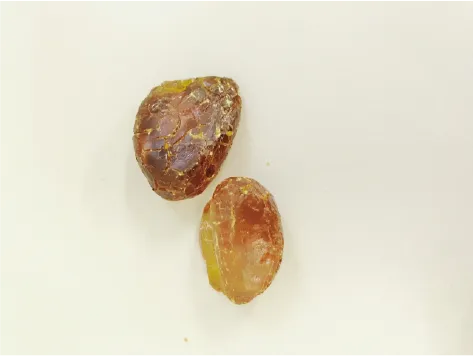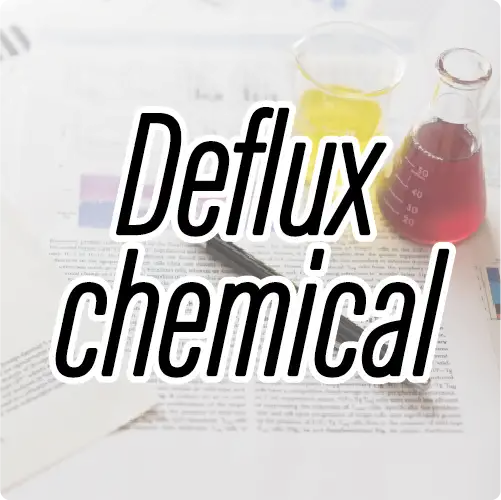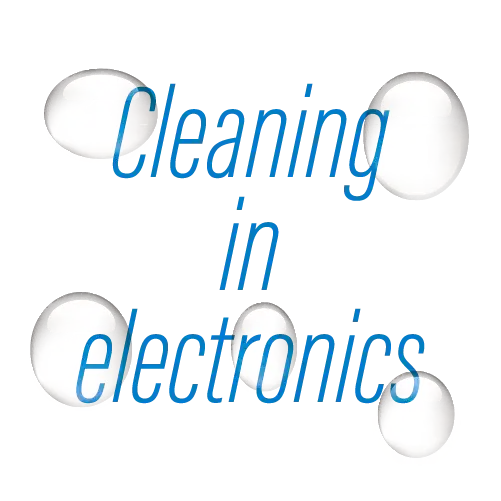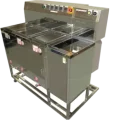- Company
- Products
- Technical report
- Indusrial cleaning
- Micro Joining and Assembly Technology
- Ultrasonic technology
- Trouble solution
- Cleaning
- Removing
- Attaching
- PCB Columns
Published on :
What is "flux", which is often heard of in the soldering process, and what does ”flux" do?
In this article, we will explain what flux is, its role, components, types, etc., as well as problems caused by flux residue left after soldering with solder paste, which consists of solder powder and flux, and countermeasures against such problems.
Soldering is a technique in which an alloy called "solder" that melts at a temperature of 450°C or lower is melted by heat and solidified at the interface between the materials to be joined, forming a very thin reaction layer.
Soldering is the most commonly used joining method in the electronics field.
A variety of electronic components are soldered to circuit boards in our everyday electronic devices such as smartphones, gaming devices, tablets, and PCs.
Photo 1 shows an image of soldering with an iron (soldering iron).

Photo 1: Image of soldering
Normally, the surface of a metal is covered with an oxide film, so simply melting the solder with heat is not enough to join to the base metal*1.
Moreover, even if the oxide film is removed once, it can quickly form again when it is combined with oxygen in the air.
This is where flux comes into play.
Rosin, a naturally occurring substance, is well known as a flux. Photo 2 shows a clump of pine resin.

Photo 2: A lump of pine resin
By using flux, you can
✓ Remove the oxidized film or surface film on the surface of the solder powder and the metal surface of the base material, and make it ready for soldering (this is called "wetting").
✓ Prevents re-oxidation of the metal surface and keeps the metal surface clean.
and thus flux plays a important role in enabling soldering.
*1 Base metal: Something to be joined. In the case of soldering in the mounting process, it is the electrode of the component or the electrode pad of the circuit board.
This section describes fluxes classified as "resin-based," which are commonly used in the mounting process.
For more information on flux types, please refer to "Flux Types" below.
Resin-based fluxes consist of a main agent such as pine resin (hereinafter referred to as rosin), an activator, and a solvent if necessary.
Let's take a look at them one by one in detail.
The main agent in flux is a resin (rosin, synthetic resin, etc.).
It is heated to remove the oxidized film on the surface of the solder or adherend, and at the same time, it protects the solder and adherend surface from re-oxidation.
An activator is an additive that increases the ability to remove the oxide film from the surface of the solder and adherend. Depending on the type of solder and the soldering temperature and time, it may contain more than one type of activator.
Solvent is an alcohol-based solvent that dissolves the solid resin that is the main agent.
It also adjusts the viscosity of the flux and helps to ensure that the flux is applied evenly to printed circuit boards, wets the base material, and improves penetration into gaps.
In addition to resin-based fluxes, organic fluxes are sometimes used for soldering in the mounting process.
The table below shows the constituent materials of each type.
| Flux Classification | Component Materials | |
|---|---|---|
| Main Agent | Activator | |
| ①Resin-based | 1. Rosin a. Modified rosin 2. Synthetic resin |
1. No additives 2. Halogenated salts of amines 3. Organic acid, amine organic acid salt |
| ②Organic system | 1. Water-based substance 2. Solvent-based substance |
|
・Rosin-based fluxes are commonly used in electronics packaging in Japan.
・Organic fluxes include a type called "water-soluble flux," which is often used overseas.
・In recent years, halogen-free, low-residue, and low-VOC fluxes have been developed with the environment in mind.
As mentioned above, various electronic components are soldered to circuit boards in the electronic devices around us (mobile devices, computers, etc.), and solder paste is used for soldering in these devices.
Solder paste is a mixture of powdered solder and paste-like flux, also known as cream solder.
Solder powder is generally spherical with a particle size of 20~30um. Recently, solder paste containing solder powder with a particle size of 5-15um has been introduced to the market for the mounting of small and micro components such as 0201 size.
A paste consists of flux (rosin, activator, solvent) and a thixotropic agent.
Thixotropic agents are added to prevent the powdered solder from separating from the flux, and to improve printability when printing solder paste.
Flux is necessary for soldering, but once soldering is completed, the flux is no longer needed as it burns away. Burnt flux is called flux residue, and it can cause problems with printed circuit boards.
| Flux residues are explained in the following page. | |
 |
Trouble solutions
|
|---|---|
Standard Micro Soldering Technology, 3rd Edition
Japan Welding Engineering Society, Micro Soldering Education Committee [ed.]
Nikkan Kogyo Shimbun
 |
Technical notes
|
|---|---|
 |
Trouble solution
|
 |
Product information
|
| Inquiry |